Minerva 2023: The Sportiest Kit yet?
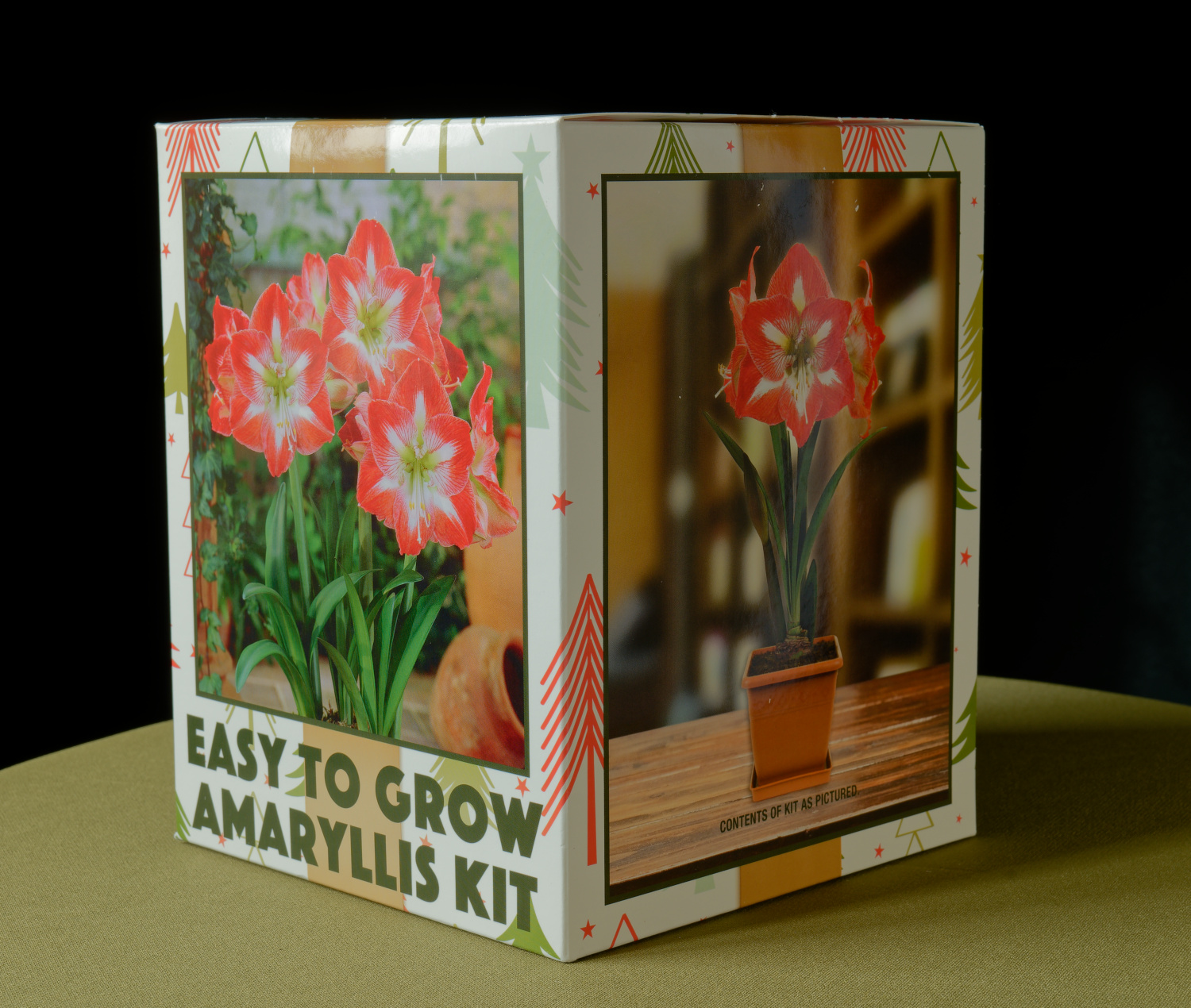
‘Minerva’ has long been the go-to amaryllis if a bold red and white contrast is needed to get into the holiday spirit. While the red may lean orange, the patterning and ruffled texture is a joy to behold. But in 2023, with so many other options in the color class, how has this 1962 introduction managed to hold sway for so long? In a nutshell…reliability. The growing, harvesting, and “programming” for bloom at a particular time are all well known. Its lack of resistance to diseases (like red blotch) that thrive in
humid climates might have seen it slowly decline in the trade, but along comes production in Peru’s semi-arid valleys to see that ‘Minerva’ remains one of the most popular amaryllis hybrids alongside ‘Red Lion’ and ‘Apple Blossom’. Let’s see how she fares!
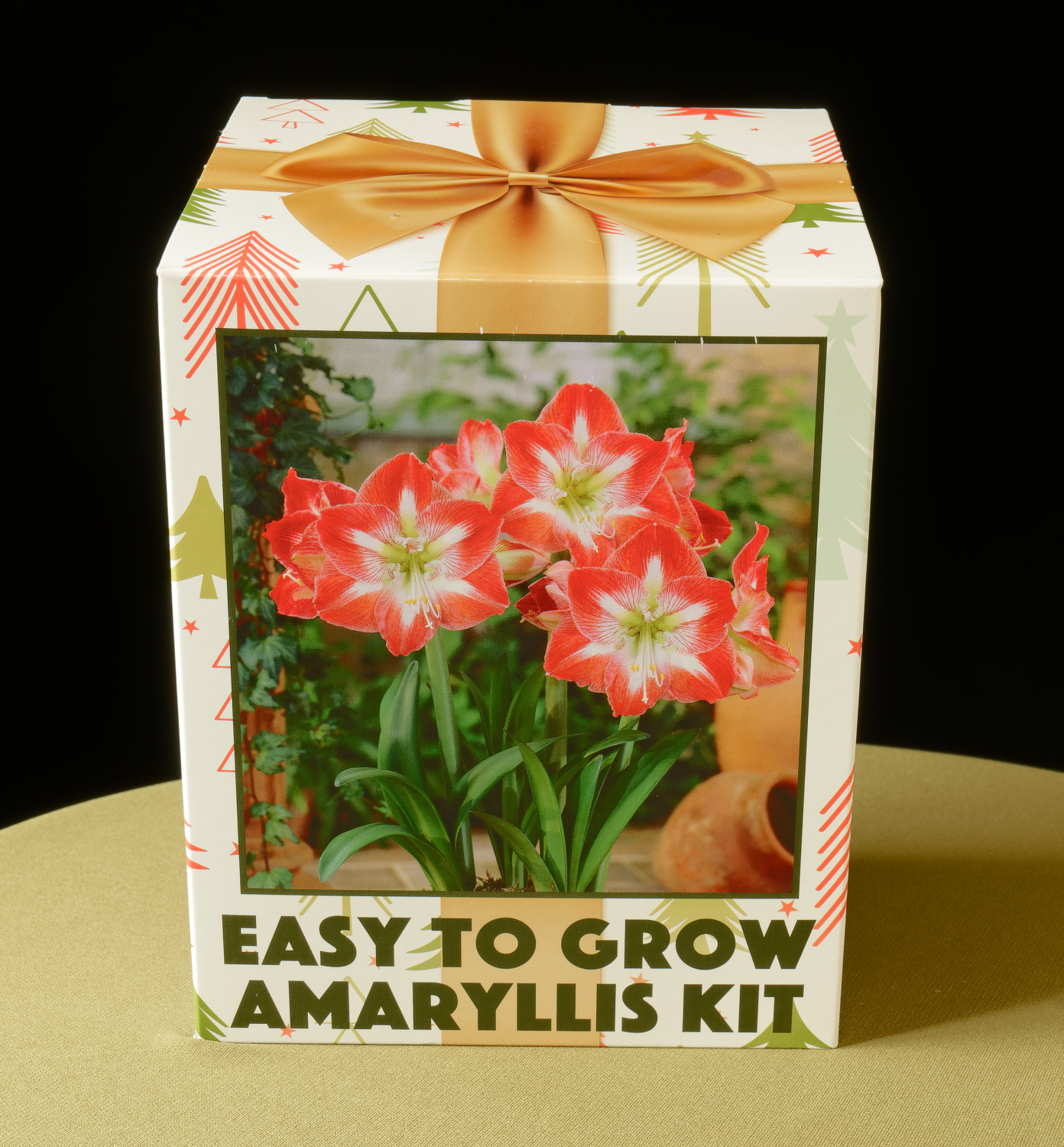
This kit was sold at a local full service nursery for $14.99, which is not bad compared to dry bulb prices, which have skyrocketed over the past 2-3 years. In 2021 we paid $13.99 for the same branded box at the same nursery. The kit was purchased November 15, 2023 and potted up the same day.
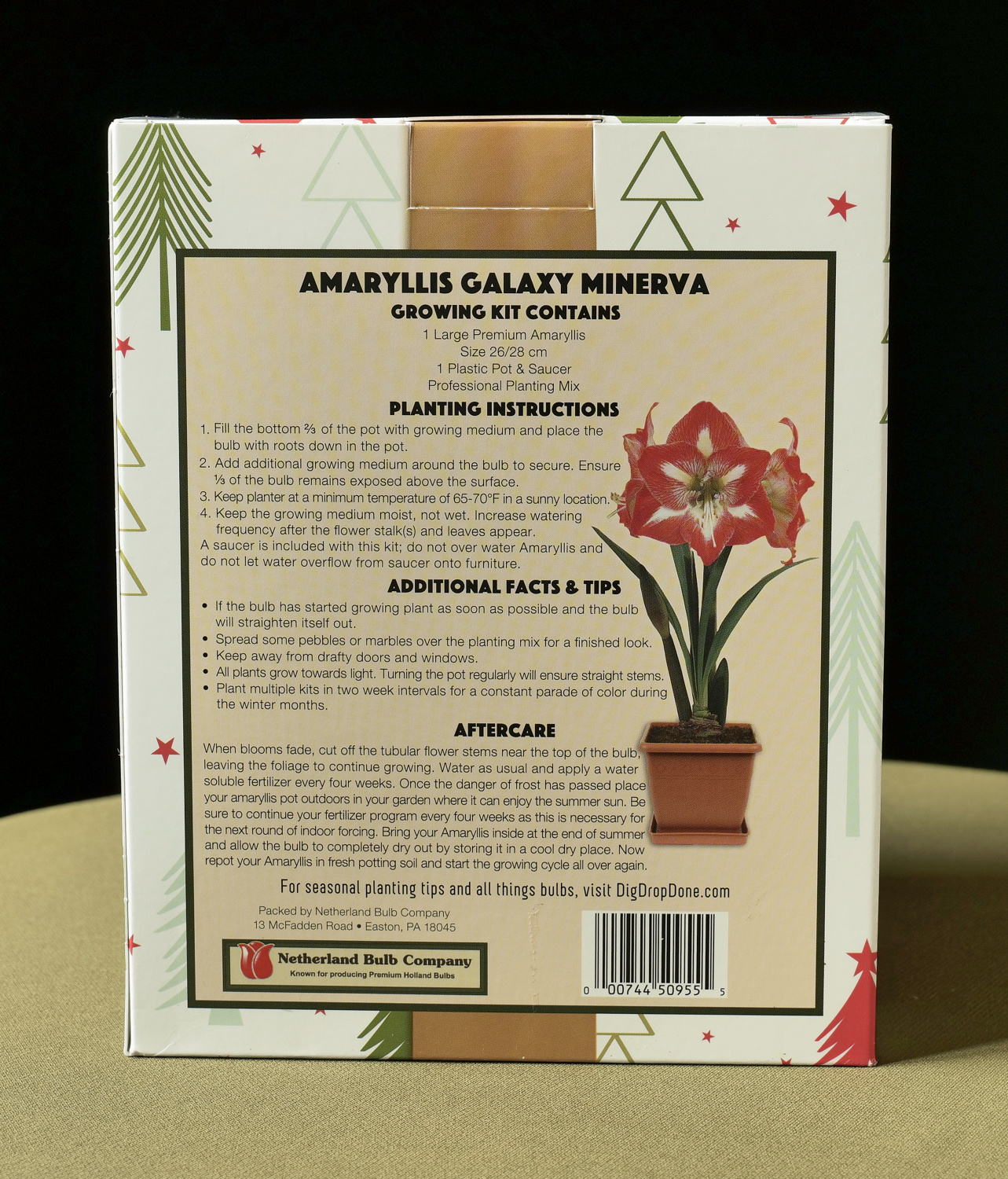
The planting instructions and care notes on this kit are simple and clear, which is important for novice growers. The use of the term “Large Premium” to denote the bulb size is pure marketing, there are no actual standards referenced. In the eye of Emaryllis, a large “Galaxy” class amaryllis could get away with such bravado if over 30 cm considering that this is a kit bulb. Ah, but the term “adequately sized” for these 26/28 cm bulbs wouldn’t convince as many buyers I suppose.
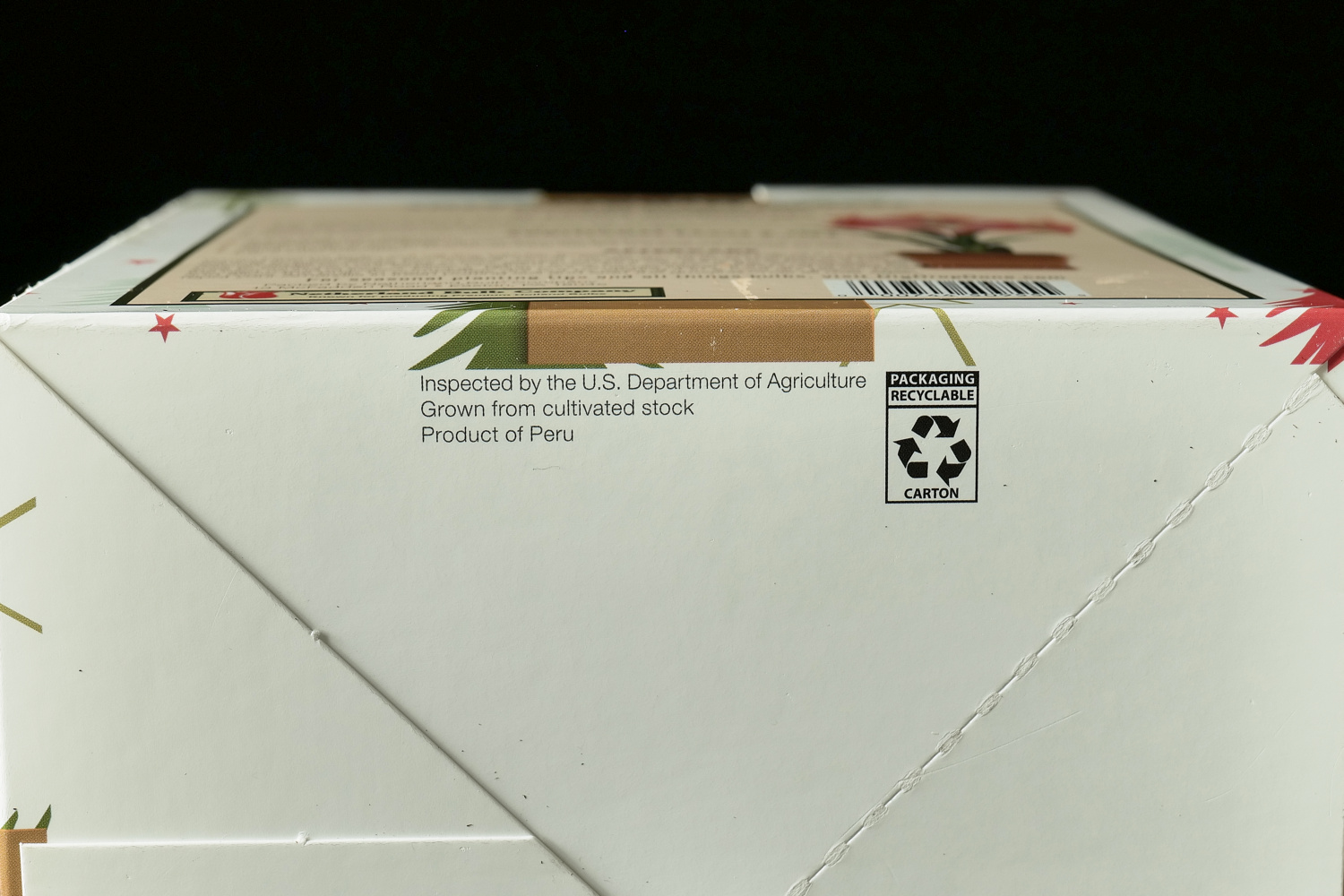
As long shown by South African growers, producing a winter flowering crop for the Northern Hemisphere isn’t so much a matter of trying to hurry maturation of growth followed immediately by the needed 8-10 week cool period for forcing. It is for them a matter of harvesting after a luxurious and natural growth period, then holding at very cool temperatures to prevent premature flowering. This means that blooms by Christmas isn’t much of a feat, but getting the anxious bulbs to wait beyond October or November is the new challenge. For amaryllis box kits marketed as Christmas gifts, an often unsuccessful one.
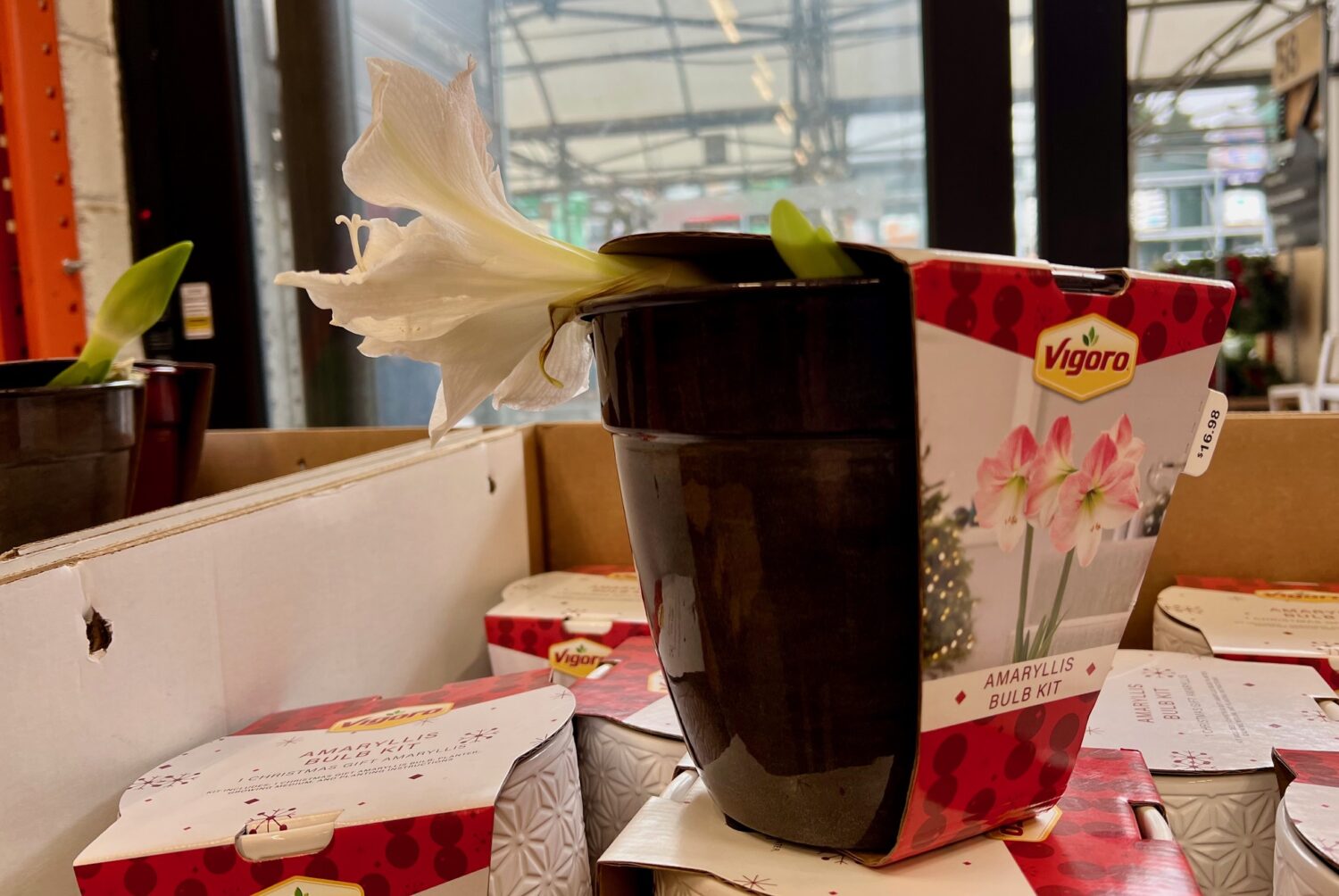
OK, back to our regular program, and a far cheerier sight.
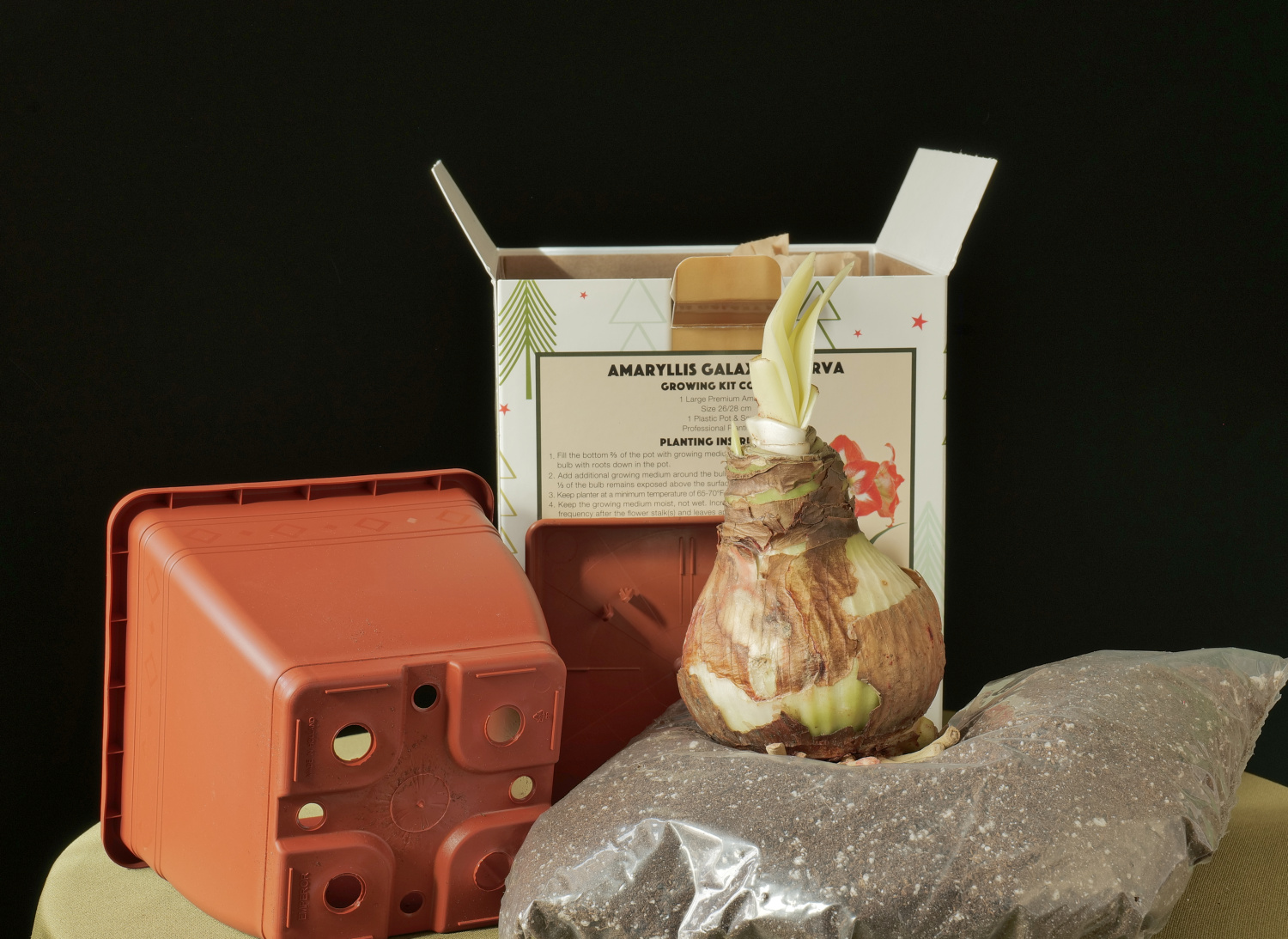
Here’s the kit unboxed. The bulb measures 26.5 cm, meeting the claim size nicely. There are several fleshy roots, but they have been chopped quite short. That’s okay, these can still produce rootlets quickly under warm temperatures and with reasonable moisture. Emaryllis has tested versions of this kit over the years, and one thing remains the same; it seems a decent value. When (albeit larger) dry bulbs are now routinely over $20 each, the promise of a bulb, pot and soil that may produce two scapes for $15 seems quite reasonable. The pot is 14 cm and has very good drainage holes and a snap-on saucer included. That’s all that Emaryllis needs in a basic kit. Plus, this would make a welcome gift in these parts 😉
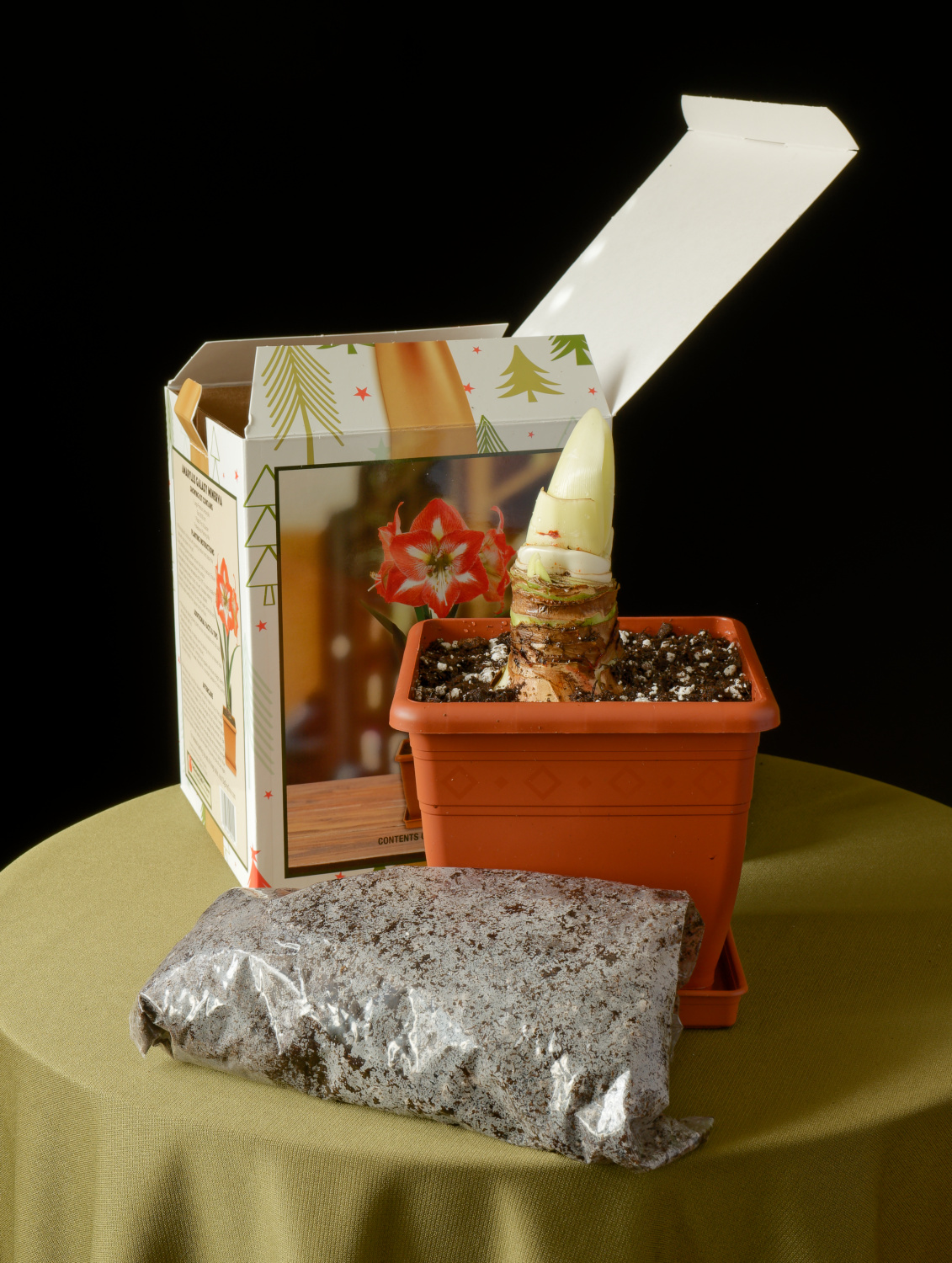
With a small amount of foliage and the emergence of one scape, our bulb looks ready to go. Somehow, these Peruvian bulbs have been stored well enough to be sprouting out just enough to see promise, but without damage. Check out that bag! It’s amazing how much extra soilless medium was left over. Emaryllis adds it to the vat of homemade media used for our dry bulbs…thanks Netherland Bulb Company! The potted kit looks quite nice and very proportionate. The etched design on the upper part of the pot and the rolled rim adds considerable style. It signals that this is no bargain basement affair. Will it impress?
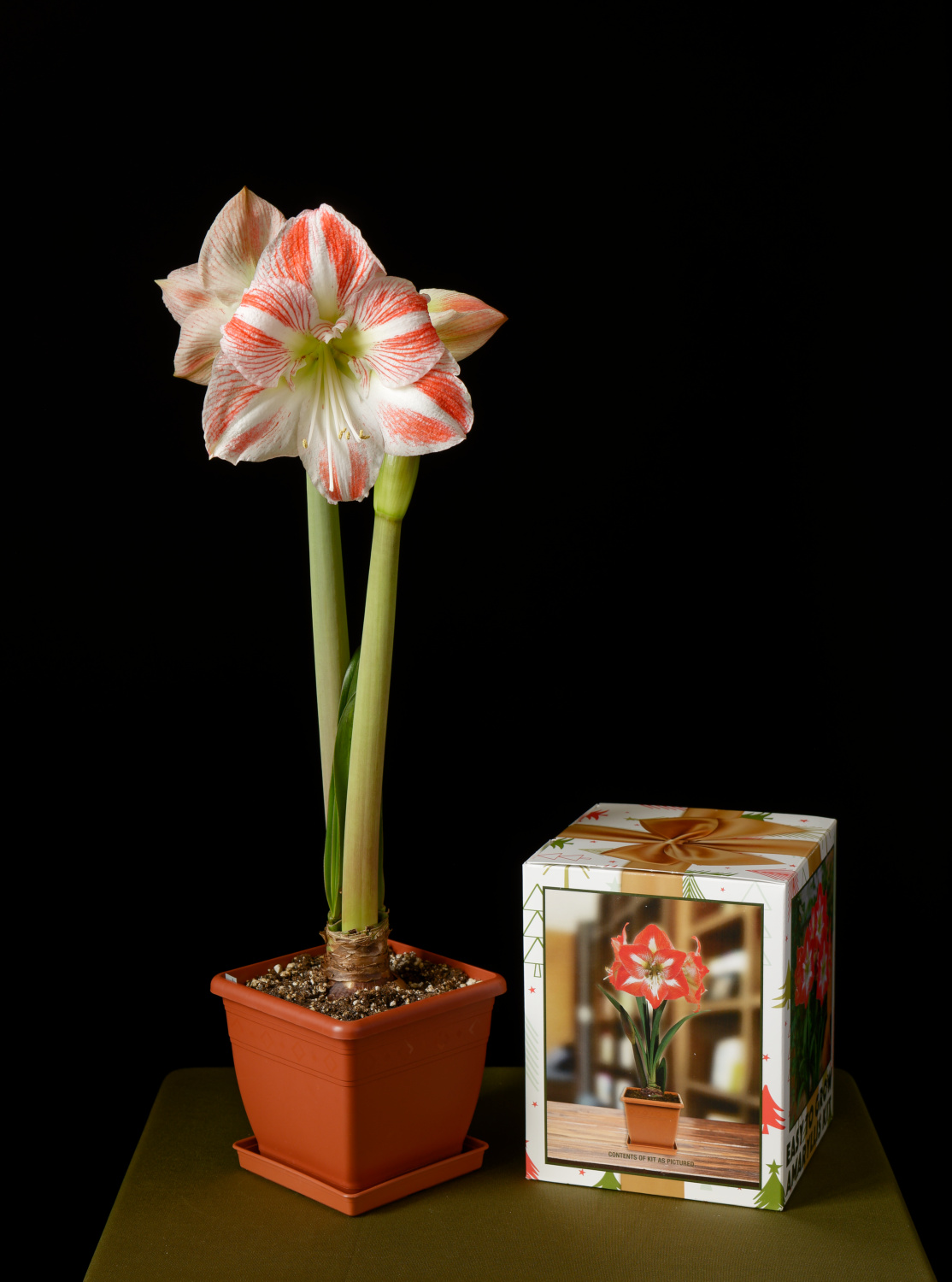
Just one month after potting, we have smile worthy display. One thing…it seems our flowers don’t quite match the box kit photos, or those on Emaryllis.com, hands down the best resource on Hippeastrum hybrids 😉 So, what gives? This does not appear to be a mislabel situation. Everything else about the flowers says ‘Minerva’. What would cause such and increase in white background color versus the vermilion red? It could be a couple of things. Possibly there is a physiological reason, and if grown on for next year, we could see normally colored flowers. More likely, however, this could be the genetic “sport”, or mutation of typical ‘Minerva’. That means as offsets were harvested, one (or more) was genetically different from its parent. Spontaneous sports are one common way of finding new varieties of plants. New entry ‘Pink Beauty’ is noted as a mutation of ‘Pink Surprise’. Our own logo is a sport of ‘Giraffe’ that we cleverly nicknamed ‘Okapi’. Ludwig 98-60 is a sport of ‘La Paz’ that is so unstable that many of its offsets throw back to ‘La Paz’, so it never entered production (thanks to my friend Vlad at Bulb in a Box for that juicy tidbit!). Variegated plants regularly produce shoots of all green, or all white leaves if they are not stable.
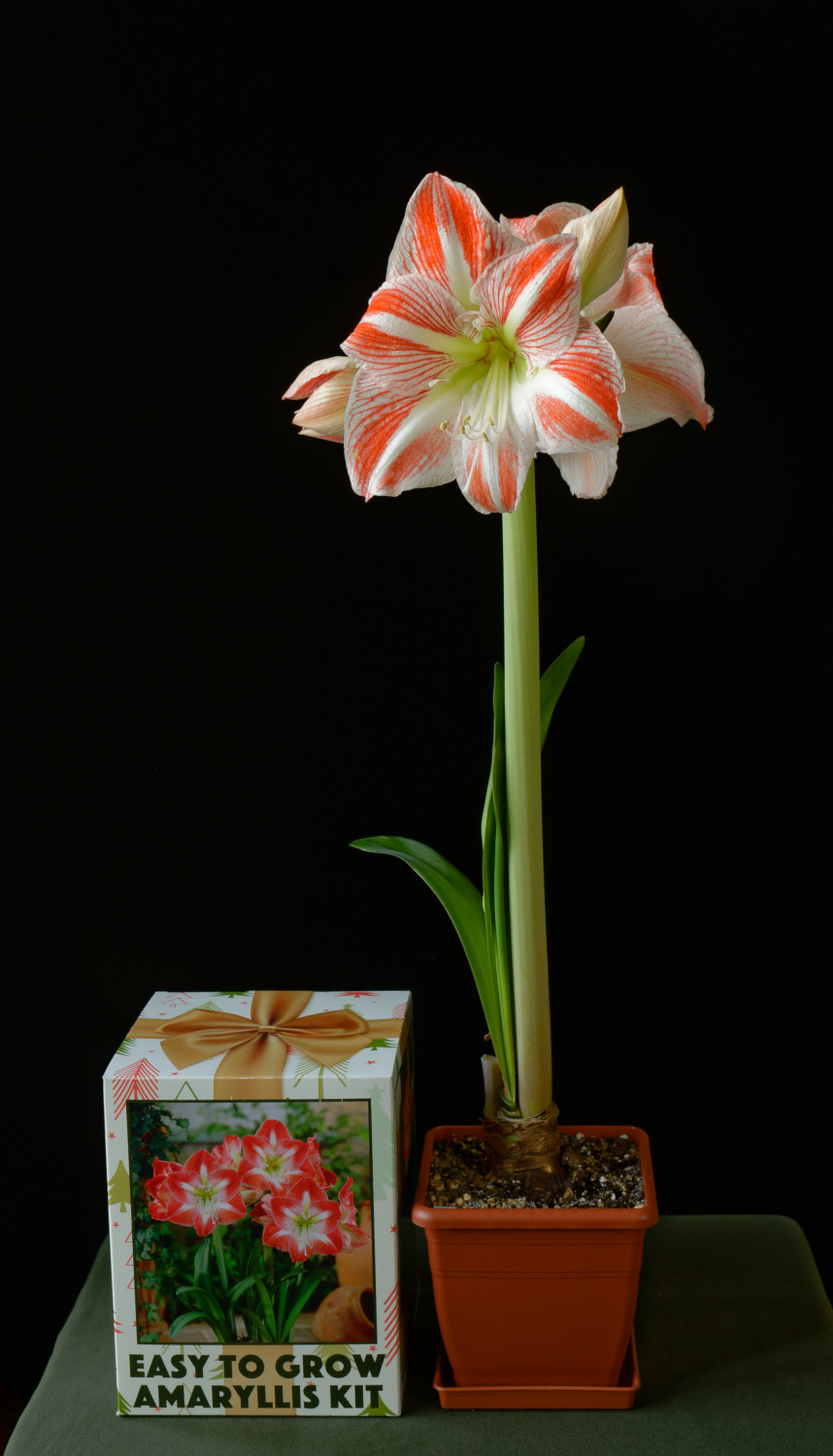
This not quite normal ‘Minerva’ provided an incredibly bright and vivid vision for Christmas. That there is much more white on balance to the vermilion ends up brightening the short days of winter even more than typical ‘Minerva’ can. This second scape is equal or better to the first, a stunt that few other varieties can pull off from smaller bulb sizes. Pretty much the perfect amaryllis for use in gift kits. The foliage is still upright and not so developed as to be flopping over, making for a lovely picture. It does look a little wonky on close inspection, but we are so distracted by those beaming blooms, that nothing else seems to matter. Will this still be a looker as the New Year rolls in?
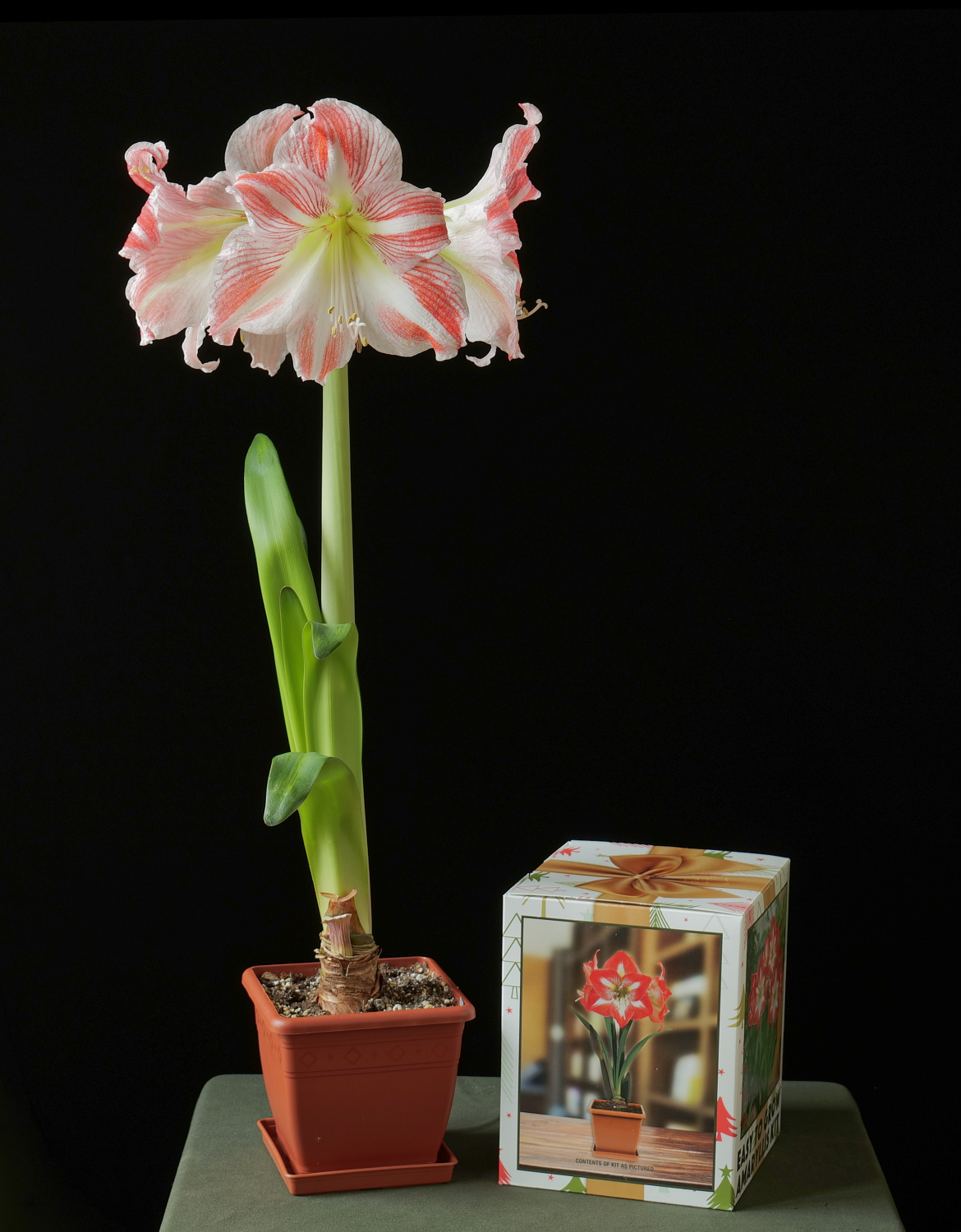
Well, this kit is about finished with a long and beautiful run. We got our second scape. The flowers have lasted well, and the foliage has remained turgid, all owing to the functioning roots. We got a total of 8 flowers, which satisfies Emaryllis as it would have for anyone lucky enough to grow this kit out. Any caveats? Well, of course!
While our ‘Minerva’ kit did just about everything that could be expected, we have an issue. This bulb will not be kept on for a subsequent season of bloom. The pattern of discoloration on all of the leaf tips is worrisome. They most likely indicate Hippeastrum Mosaic Virus (HMV). This viral infection is common to Hippeastrum collections. Too bad it may be making its way through the growing fields in Peru. It is sap transmitted, and working through a collection with cutting tools must be done with hospital-like sanitation procedures to prevent transmission to uninfected plants. Insects such as aphids can also transmit the virus. Emaryllis will hold this plant just long enough to be sure no third scape emerges. That is very unlikely, so this one is bound for the compost bin before long. Too bad, it gave a great show, and represented a good value for our money compare to many dry bulbs sold at larger sizes (and prices!) that might also produce two scapes, and eight gorgeous blooms. It was a pleasure to grow, bloom and photograph this one for posterity. Oh, shoot, I think Emaryllis is welling up a bit. New Year’s Day always brings out E’s sentimental side.

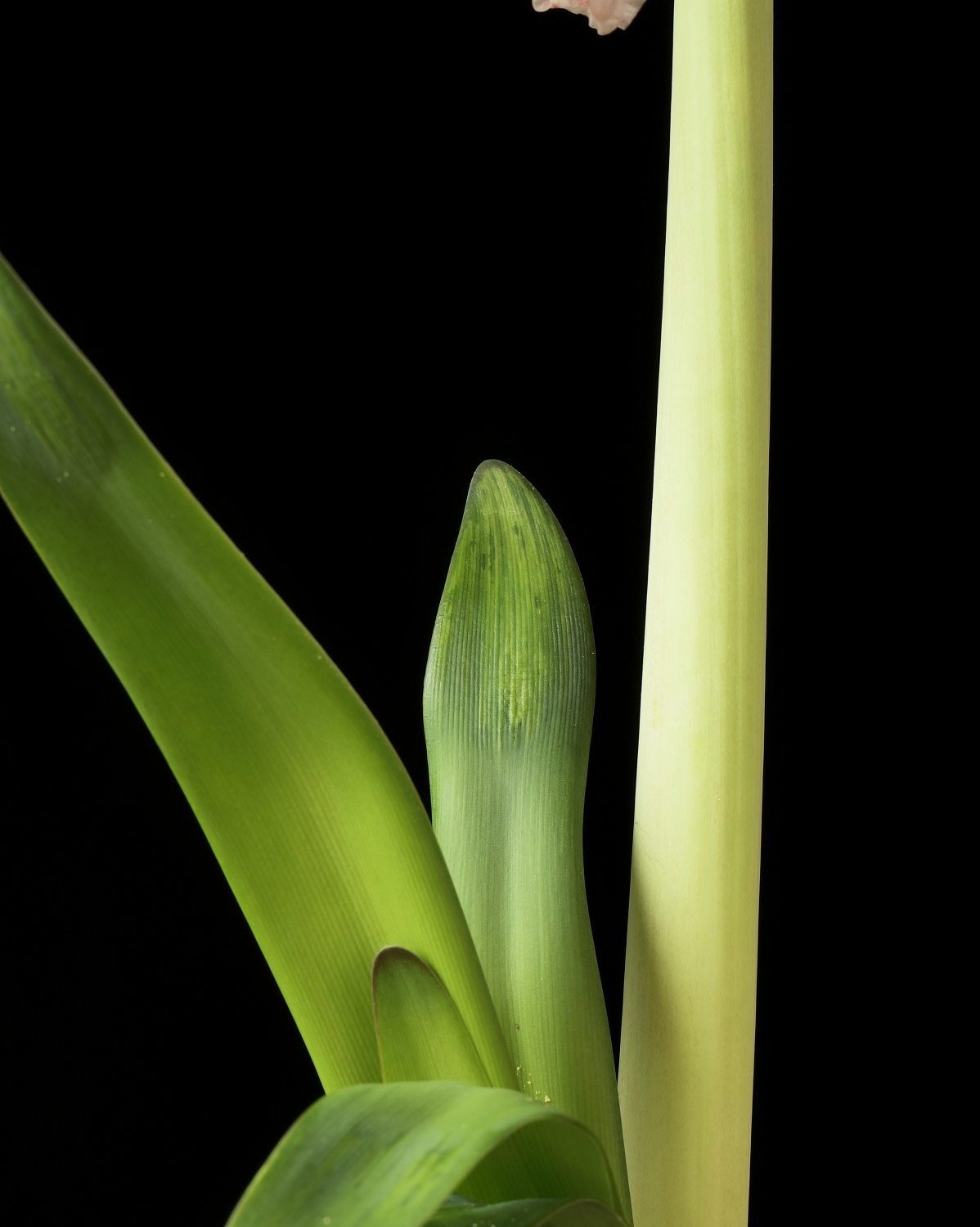
Whatever the reason for the increase in white, it’s really pretty! I just bought the one box kit this year – so far, it’s produced lots of leaves but no scape. I had a similar issue with one purchased last year from the same place, which never flowered – hoping that one will flower this year!
Very nice! I’m not a Minerva fan but would be very happy with that. And YAY! to the release of the first of your awaited 2023 box kit reviews.👏🙂